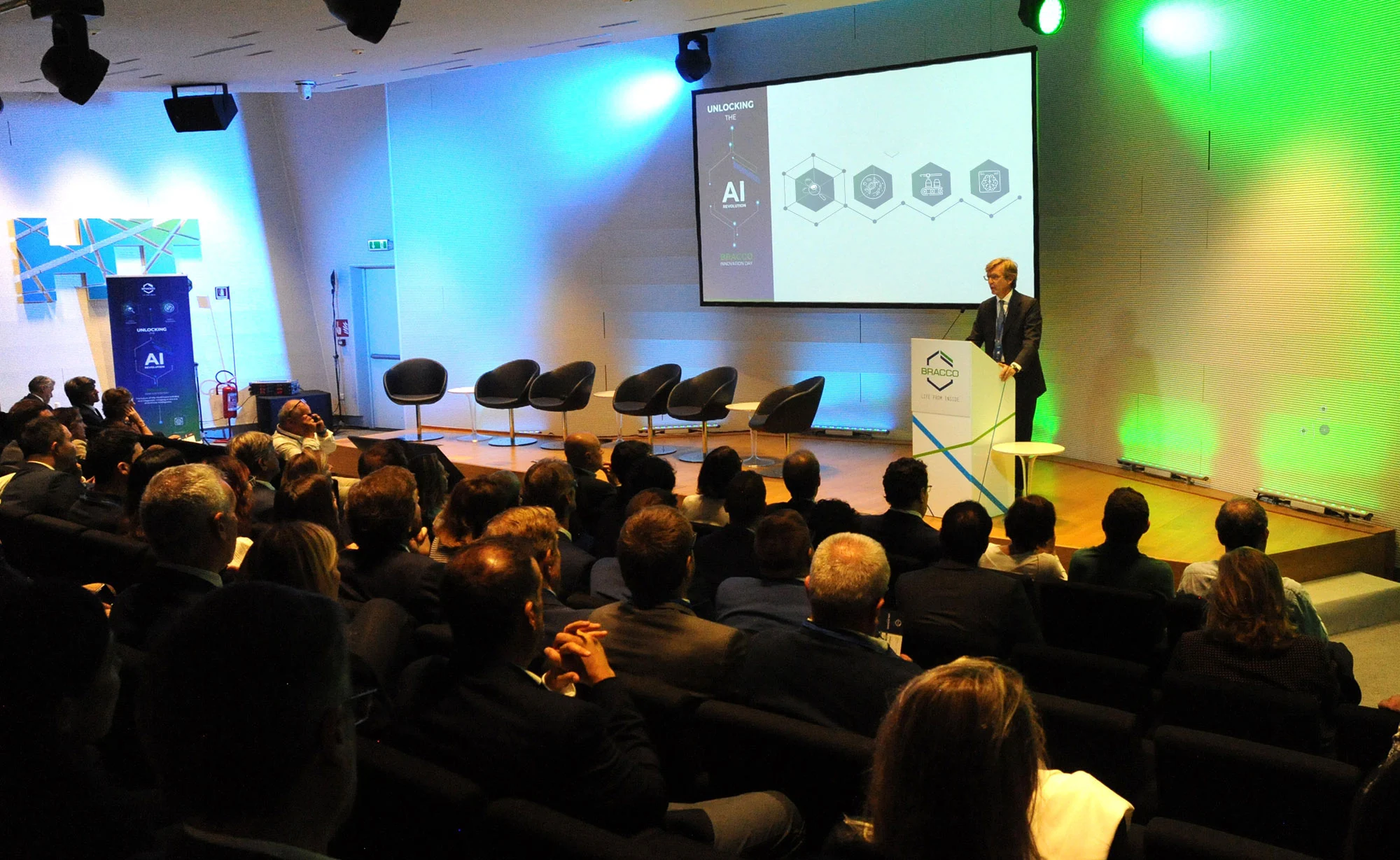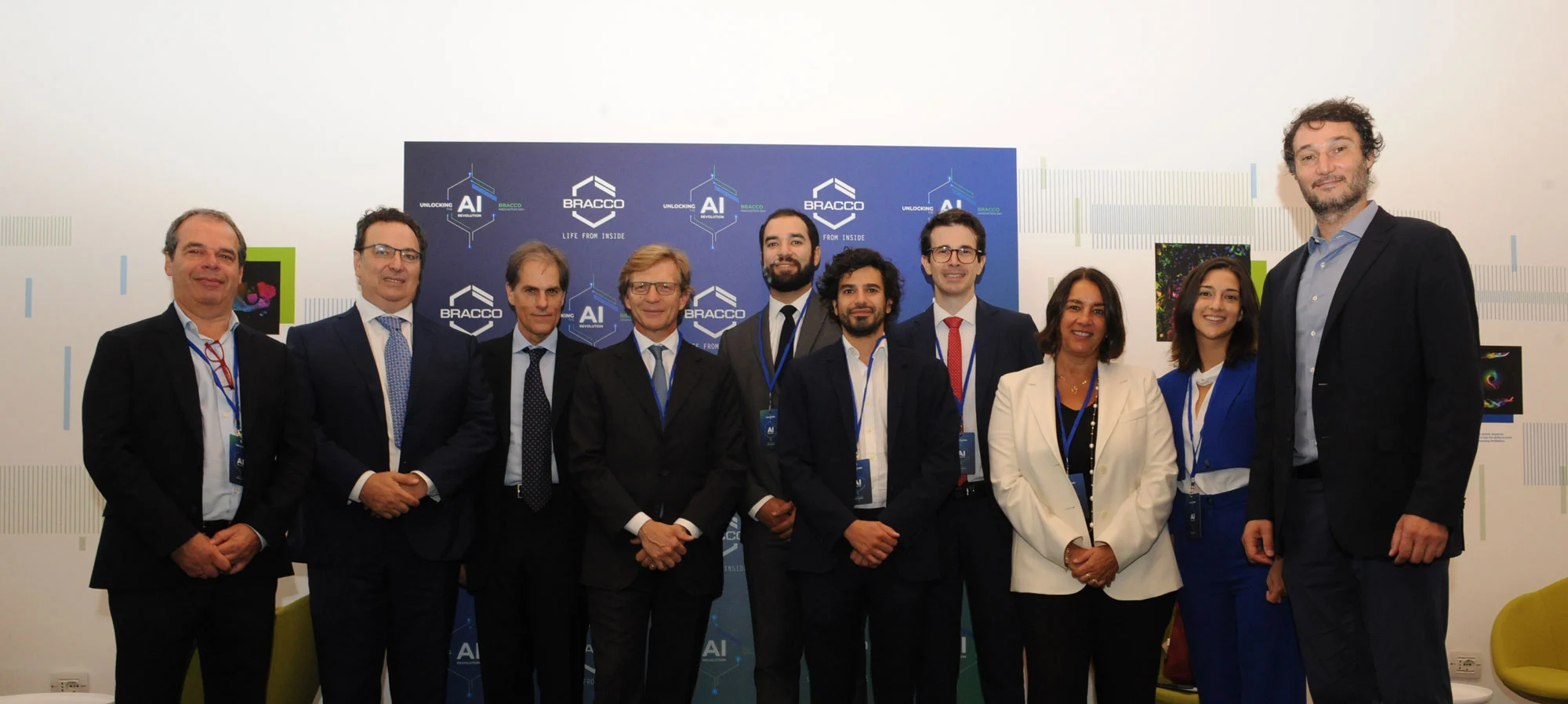Innovation in Healthcare Industry and Diagnostic Imaging
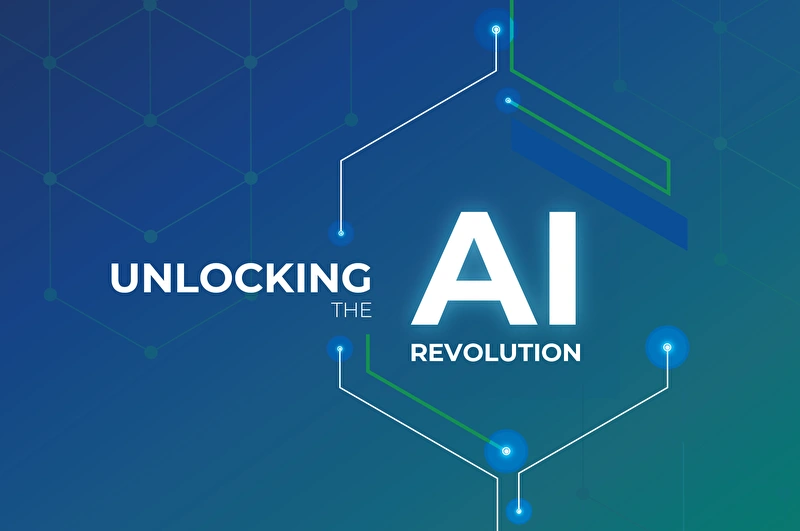
Innovation is at the heart
of Bracco’s activities
The company invited experts to discuss how artificial intelligence (AI) can help develop medicines faster and improve diagnostic accuracy in a dedicated Innovation Day last September.
AI can help overcome the many challenges faced in healthcare today, such as the shortage of medical professionals and the ever-increasing number of patients suffering from complex diseases.
Fulvio Renoldi Bracco, Vice Chair and CEO of Bracco Imaging, set the tone in his opening speech. ‘‘AI represents an innovation that is not only part of our future, but firmly part of the present, and already part of our daily lives,’’ he told the 200 attendees in Milan’s Human Technopole, which hosted the event. ‘‘It spans all areas, from culture to manufacturing, and is particularly important in healthcare, pharmaceuticals, medical devices, and diagnostic imaging, where it already plays an important role and will continue to grow.’’
Scientists from different institutes then showcased how AI brings value in pharma industry and imaging diagnostics.
"Quantum computing and AI are extremely helpful to tackle the complexity of computing and scientific scenario."
Alessandro Curioni, IBM Fellow, Vice President Europe and Africa, IBM Research and Director IBM Research Europe.
“Quantum computers leverage principles of quantum mechanics to process and store information using quantum bits, also called qubits,” he said.
“Those can exist in multiple states simultaneously, by superposition, and be entangled, enabling parallel computation, and leading to potentially exponential speedup in solving certain problems compared to classical computers.”
Quantum computing and AI are able to accelerate drastically the scientific identification of novel chemical matter with molecular generative models, and they can predict the properties of designed small molecules, proteins, polymers, and materials.
“This will lead to the creation of a lab that learns, an AI-enabled lab, to usher in a new era of reproducible and collaborative experimentation, revolutionizing the scientific method, fundamental to discovery, involves questioning, studying, hypothesizing, testing, and reporting,” he said.
"The burden of non-communicable diseases such as cardiovascular disease or cancer is one of the biggest causes of mortality, morbidity and activity loss in the world, and prevalence is increasing"
Nicole Soranzo, head of the Genomics Research Centre for Population and Medical Genomics at Human Technopole, and a professor of human genetics at the University of Cambridge, UK, who also spoke during the event.
Genetics can be a powerful ally when addressing these challenges, she argued. “With large-scale genomics studies, we want to study biological processes of health and disease, assess the aetiology of the disease, predict risk or early detect diseases, and develop new drugs and tailored treatments,” she said.
“Research has shown many times that if you have genetic evidence of different types that links a gene to a disease, you are between 2 and 30 times more efficient at developing drugs. The drug that has genetic evidence has a much-increased rate of approval.”
Genetics implementation in clinical practice is still in its early days, but it could have an immediate impact on drug repurposing, according to Soranzo, whose group uses cutting-edge technological platforms to perform deep structure biology, large-scale genomics, image analysis, and high-performance computer-based machine learning (ML) to study diseases.
"In the last decade, we've benefited a lot from machine learning and it is starting to dominate this field"
Craig Glastonbury, Research Group Leader at Human Technopole, then delved into the applications of ML in omics and ex-vivo imaging. Glastonbury works to develop methods to extract quantitative phenotypes from biomedical imaging data, mainly from histology and MRI.
One such method is to use language models such as visual transformers to avoid annotating tissue structure in pathology, a time-consuming task. Glastonbury and his group thus trained a vision transformer model to learn representation of images on 1.7M histology image tiles. “The model learned to recapitulate and automatically segment tissue substructures we didn’t label,” he said.
Another field that is really benefiting from machine learning as data becomes more readily available is single-cell RNA-sequencing, with which one can effectively sort the tissue and all of its constituents and measure the expression of each gene and each individual cell.
There are many more opportunities to seize for machine learning, as vast histological archives exist in almost every hospital with a pathology department.
“Retrospectively using this diagnostic material that is otherwise thrown away could be useful to develop powerful prognostic models to inform patient care,” he said. “If we can couple it with rich clinical and genetic information, this data can also help in fundamental biological discovery about tissue structure, function and disease etiology. But for it to be impactful, it requires national investment, coordination, and time.”
In the following talk, Massimo Bresciani, founder of Scientific Cloud Limited and Industry Director of CMAC, a research center to transform medicines development, manufacture & supply at the University of Strathclyde, UK, focused on medicine design and manufacturing in the era of AI, emerging tools and opportunities.
Medical knowledge doubles every 73 days, underscoring its rapid advancement. The US generates a staggering 80 billion medical images annually, requiring swift interpretation at 1.5 seconds per image, while radiology grapples with a 4.4% human error rate, emphasizing precision needs.
These data highlight the need for efficient tools to support radiologists in their daily work, according to Gabriel Krestin, Professor emeritus at Erasmus MC in Rotterdam, the Netherlands, who gave the keynote lecture.
“Radiologists face challenges, spending 64% of their time on non-interpretative tasks, covering 2.2 kilometers daily with a mouse, and facing a concerning -5.4% annual reimbursement decline since 2010,” he told the audience. ‘‘The anticipated global shortage of healthcare workers - 12.9 million - is significant.”
AI has emerged as a transformative tool, nearing 90% accuracy in fracture detection. It eases radiologists' burden by automating tasks, improving efficiency, and revealing critical insights beyond human capability.
But the new technology demands a comprehensive, integrated, trustworthy, and affordable approach, Krestin highlighted. “58% of clinicians remain skeptical about AI data reliability, highlighting the need to bridge this trust gap for healthcare revolutionization,” he said.
Giovanni Valbusa, Digital Innovation R&D Project Manager, and Silvia Gonella, AI Imaging Specialist CDI at Bracco Imaging, overviewed all the research activities in the field of AI and among them they also presented the results of an important study published in the prestigious journal Investigative Radiology.
They showed that a Bracco team successfully trained a neural network using an innovative approach to enhance the contrast in brain MRI without impacting the current clinical protocol. This neural network has proven to be a valuable tool in improving the visibility of small enhancing structures.
The introduction of this technology holds significant promise as it substantially increases contrast enhancement while using standard doses of contrast agents.
To illustrate the state of the art of AI systems for diagnostic imaging, Cyril Di Grandi, CEO and co-founder of Avicenna.AI, and Christian Allouche, CEO and co-founder of Gleamer, presented their clinical solutions and they highlighted that AI must deliver real clinical and financial value through integrated solution with the highest accuracy and completeness.
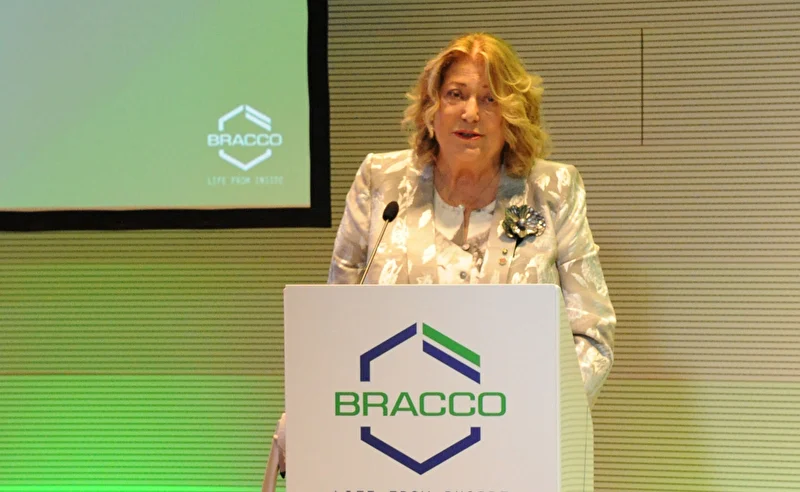
Ethical, political, and regulatory aspects of the AI revolution
Diana Bracco, President and CEO of the Bracco Group, opened the final panel discussion, which featured Gianmario Verona, President of Human Technopole and representing European and regional institutions; Claudia Colla, Head of the Regional Representation of the European Commission in Italy; and Alessandro Fermi, Councilor for University, Research, and Innovation for the Lombardy Region. The panel addressed the numerous ethical, political, and regulatory aspects that national and international institutions are currently addressing with the AI revolution.
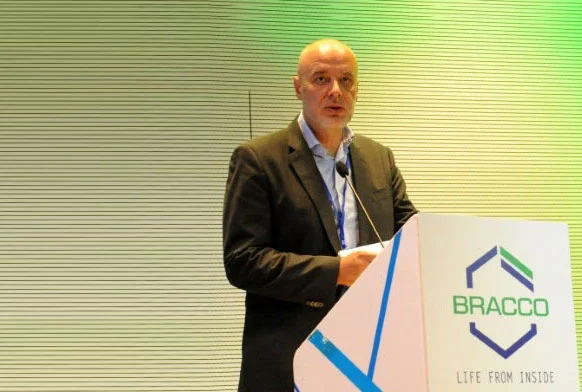
Winding up the discussions was a talk delivered by Anna Maria Bernini, Italian Minister of Universities and Research, who reviewed the regulatory challenges that AI poses for political bodies both in Italy and abroad.
In his closing remarks, Fabio Tedoldi, Head of Global Research and Development at Bracco Imaging, insisted that AI has the potential to optimize current processes.
‘Let’s teach AI to be more inclusive by including training data from different geographies, different genders, possibly without excluding any minorities. Let’s teach AI to be more echo-friendly by implementing rules and cost functions that privilege not only the higher effectiveness, the higher efficiency or the lower economical costs, but also the lower impact on the environment. And let’s code less selfish AI by teaching it to privilege the benefit of communities instead of the interest of single individuals … or of single algorithms or machines.” he concluded.
